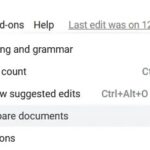Understanding how to form comparative adjectives is essential for clear and descriptive English communication. This guide will specifically focus on the comparative form of “noisy,” explaining the rules and providing examples to solidify your understanding.
Forming the Comparative of “Noisy”
“Noisy” is a two-syllable adjective ending in the letter “y.” To form its comparative, follow these simple steps:
- Change the “y” to an “i”: “noisy” becomes “noisi”
- Add “-er”: “noisi” becomes “noisier”
Therefore, the comparative form of “noisy” is noisier.
Using “Noisier” in a Sentence
Here are a few examples showcasing the correct usage of “noisier”:
- The city center is noisier than the suburbs.
- My new apartment is noisier than my old one.
- The construction site became noisier as more workers arrived.
- This classroom is noisier than the library.
- The concert was much noisier than I expected.
General Rules for Comparative Adjectives
While “noisier” follows a specific rule for two-syllable adjectives ending in “y,” it’s helpful to understand the broader rules for forming comparatives:
One-Syllable Adjectives:
- Generally, add “-er” to the end of the adjective (e.g., tall – taller, old – older).
- If the adjective ends in a single consonant preceded by a single vowel, double the final consonant before adding “-er” (e.g., big – bigger, thin – thinner).
- If the adjective ends in “e,” simply add “-r” (e.g., late – later, wide – wider).
Two-Syllable Adjectives:
- Adjectives ending in “y” follow the “noisier” rule (e.g., happy – happier, easy – easier).
- Many other two-syllable adjectives can use either “-er” or “more” (e.g., clever – cleverer/more clever, quiet – quieter/more quiet). Common usage often dictates the preferred form.
- Some two-syllable adjectives always use “more” (e.g., modern – more modern, famous – more famous).
Three or More Syllable Adjectives:
- Always use “more” before the adjective (e.g., beautiful – more beautiful, interesting – more interesting, difficult – more difficult).
Irregular Adjectives:
- Some adjectives have irregular comparative forms that must be memorized (e.g., good – better, bad – worse, far – farther/further).
Conclusion
Understanding how to form and use comparative adjectives correctly is crucial for effective English communication. Remember, the comparative form of “noisy” is “noisier,” formed by changing the “y” to an “i” and adding “-er.” By applying the general rules outlined in this guide, you can confidently compare and contrast various qualities and characteristics using the appropriate comparative forms.
